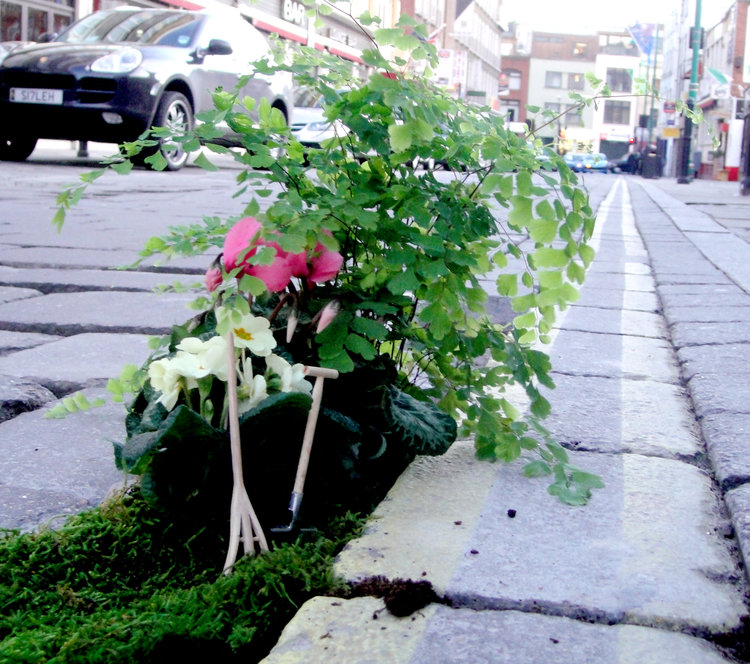“To discover and reveal the deeper substrate of the landscape is something the natural sciences alone cannot accomplish.” – Günther Voght
The Department of Urbanism at the Faculty of Architecture and Built Environment, TU Delft considers urbanism as a planning and design oriented activity towards urban and rural landscapes.[1] It aims to enhance, restore or create landscapes from a perspective of sustainable development, so as to guide, harmonise and shape changes which are brought about by social, economic and environmental processes. In this respect we can consider urbanism as an object or goal-oriented interdisciplinary approach that breaks down complex problems into ‘compartments’ or ‘themes’. The core of urbanism is formed by the disciplines of urban planning, urban design, and landscape architecture. Giving shape to the relationship between man and natural landscape is a core task for this disciplines and involves civil-, agriculture-, nature-, and environmental based techniques as operative instruments. However, in order to work together effectively it is important to identify and develop the qualities of the involved disciplines individually. What is the particular nature of landscape architecture as an independent discipline? The presumption is that the answer can be found in a repertoire of principles of study and practice typical for landscape architecture.
The nature of landscape architecture as a discipline, and particularly landscape design as an important activity, can be characterised by the interplay of four principles of study and practice.[2]
(I) Landscape as three-dimensional construction
Here the focus is on research and design of the landscape ‘from the inside out’, as it could be experienced by an observer moving through space. It elaborates on the visual manifestation of open spaces, surfaces, screens and volumes and their relationships in terms of structural organisation (e.g., balance, tension, rhythm, proportion, scale) and ordering principles (e.g., axis, symmetry, hierarchy, datum, transformation).[3] The basic premise is that the shape of space, plasticity (form of space-determining elements) and appearance (e.g., colour, texture, lighting) of spatial elements in the landscape determine the relation between design and perception. This principle addresses the form and functioning of three-dimensional landscape space, which creates a spatial dynamic. This might be, for example, the framing of a landscape or urban panorama, or the construction of a spatial series along a route, making a pictorial landscape composition. Examples from landscape architecture designing landscape as a three-dimensional construction include: Stourhead landscape garden, Wiltshire (UK) (figure 1), Vaux-le-Vicomte, Melun (France) and Japanese pre-modern gardens.

(II) Landscape as history
The landscape is ‘read’ as a biography, as a palimpsest that evidences all of the activities that contributed to the shaping of that landscape. The Genius Loci expresses the character of the site, not only geographical but also the historical, social, and aesthetic character, and is at the heart of this principle. The landscape is regarded as a layered entity where traces that time has laid over can reinforce or contradict each other. Knowledge of these layers is one of the starting points for new transformations of the landscape involved, or adding a new design layer. This principle involves the evolution of landscape over time and elaborates on operations of ‘erasing’ and ‘writing’ history.[3] Operations of erasing history include: complete or partial eradication, etching, excision, entropy and excavation. Operations of writing history include: parceling, infill, addition, absorption, enveloping, wrapping, overlay, parasitize and morphing. Examples from landscape architecture carefully intervening in the landscape as a historical culture include: Bunker 599, Diefdijk (Netherlands) (figure 2), the Quarries at Crazannes (France) and Oranjewoud Estate (the Netherlands).

(III) Landscape as scale-continuum
This principle regards landscape to be a relational structure connecting scales and spatial, ecological, functional and social entities. Landscape is viewed as a scale-continuum. The design involves establishing relationships via attachment, connection, embedment of a specific site or location into the broader context at different scale levels. A landscape intervention will have impacts on different levels of scale, hitting interests of stakeholders operating on that level. Although scale is a matter of grain and radius, it implies that a particular site is always part of the larger context.[5] Once the frame and granule of the site (object of study) is determined, the rest is regarded ‘context’. The reach of scale is also important, because conclusions on a specific level of scale could be opposite to conclusions drawn on another level of scale (called: scale-paradox). This principle addresses working through the scales as an important basic premise, for example for systematic elaboration of planning strategies (e.g., regional planning and design) and design interventions (e.g., project-based realization). Examples from landscape architecture connecting scales and different layers of interest are: Metropolitan Park Boston (USA) and Emscher Landscape Park (Germany) (figure 3).

(IV) Landscape as process
The landscape is regarded as a holistic and dynamic system of systems.[6] In that respect landscape is an expression of the dynamic interaction between ecological, social and economic processes. The landscape is considered as a process rather than as a result. Natural and social processes constantly change the landscape, making the dynamics of the transformation a key issue in research and design. The design is like an open strategy, aimed at guiding developments, no blueprint design. Projects play a role as an open-ended strategy, as in staging or setting up future conditions (e.g., manipulating processes of erosion and sedimentation by water or the development of project-based master plans). Operations focus on the interaction between landscape processes and typo-morphological aspects and facilitate aesthetic, functional, social and ecological relationships between natural and human systems. This principle of study and practice elaborates on models for understanding the landscape as system (e.g. layers-approach) and concepts like sustainable urban metabolism and urban ecology. Examples from landscape architecture using natural and social processes to shape landscape include: Jardin Élémentaires (Italy/France: study project) (figure 4), Nature development De Gelderse Poort, Nijmegen (the Netherlands) and London Guerrilla Gardens (UK).

The knowledge reflected by the principles of study and practice form the core of landscape architecture and expresses the integrative nature of the discipline. It embodies a way of thinking typical for landscape architecture and is visible in landscape architecture theories, planning and design processes and products. The understanding and development of this body of knowledge is an important basis for interdisciplinary, context-driven and problem focused research. Boldly stated it is like this: “if you don’t know what the core of your own discipline is, you don’t know what you can contribute to other disciplines”. By developing the typical principles of study and practice of landscape architecture, it is possible to contribute to other fields in terms of theories, methods and techniques, as well as their application via concepts, strategies and interventions. It becomes the basis for exploring the boundaries of the discipline, exchange of knowledge and the search for collaborations and partnerships to engage in sociocultural, ecological and technological issues from the perspective of spatial planning and design.
Notes
[1] This is an abridged version of the book chapter: S.Nijhuis (2013) “Principles of Landscape Architecture”, in: E. Farini and S. Nijhuis (eds.) Flowscapes. Exploring landscape infrastructures. Madrid, Universidad Francisco De Vitoria, pp 52-61
[2] This principles are adapted and modified from: M. Prominski (2004) Landschaft entwerfen: Einführung in die Theorie aktueller Landschaftsarchitektur. Reimer Verlag; S. Marot (1995) ‘The landscape as alternative’, in: K. Vandermarliere (ed.) Het Landschap / The Landscape. Four International Landscape Designers. Antwerp, De Singel, pp 9-36; S. Nijhuis (2006) ‘Westvaart als landschapsarchitectonische ontwerpopgave’, in: Westvaart in de polder. 4 ontwerpen voor een verdwenen 7-molengang. Leiden: Uitgeverij Groen, pp 35-37.
[3] S. Bell (1993) Elements of Visual Design in the Landscape. London, E & FN Spon.
[4] P. Lukez (2007) Suburban Transformations. Princeton Architectural Press
[5] T. de Jong (2006) Context Analysis. Delft University of Technology
[6] I.S. Zonneveld (1995) Land Ecology. An Introduction to Landscape Ecology as a base for Land Evaluation, Land Management and Conservation. SPB Academic Publishers, Amsterdam




